


Under Construction
Simple audio mixer
The end of support for Windows 7 meant that, regrettably, I had to buy a new computer. I felt I would be pushing my luck to try and upgrade my seven-
Anyway, I digress! The new computer is noticeably faster than the old one, as you would expect. Start up is very fast at less than 30 seconds compared with seven minutes for the old computer. However, it takes time to transfer everything over. Some software is no longer available, I have forgotten passwords etc etc. So, for the time being, I am running both computers. My audio amp has only one input so I need a very simple mixer to feed in audio from both computers.
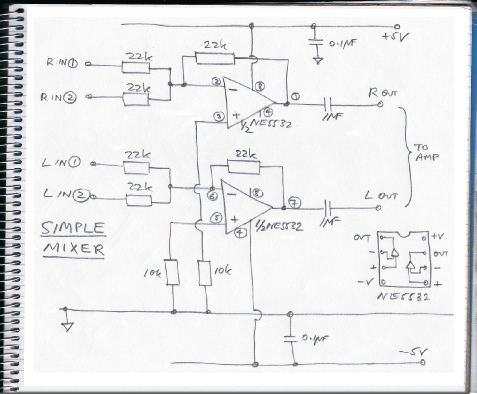
The circuit is the most basic op-
There were some issues! Firstly, I foolishly used some cheap stereo jack which made very unreliable contact with the plugs. Eventually by adjusting the contacts with pliers I got them to work reasonably reliably. Secondly, there was still a lot of noise. This was being picked up by the mixer from the original computer (not the new one). When the computer is idle there is very little noise but when it is doing anything the noise can range from scratching to whirring to continuous white noise. No amount of simple screening or application of capacitors to various parts of the circuit seems to make a difference. For the time being, I am putting up with it.
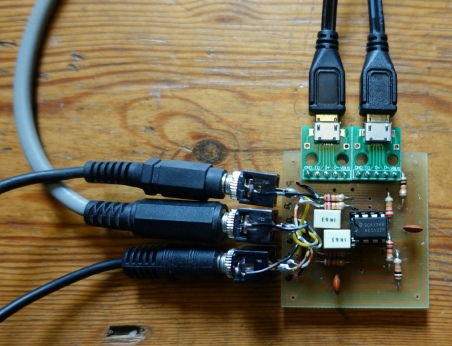
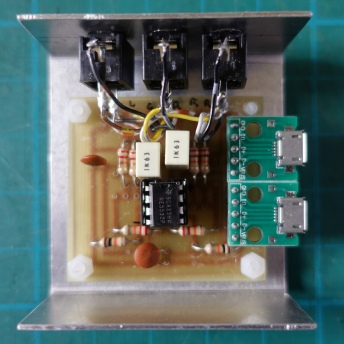
Above left: the circuit assembled on a pcb. Above right: some screening for the circuit (it didn’t help!)
The circuit makes use of a NE5532 dual op-
Where the noise is coming from is a mystery. It’s not RF being picked up out of the ether as it were as if the cable to the computer is disconnected it goes away! However, if I plug the computer directly into the amplifier, not through the mixer, it goes away.
I tried isolation capacitors on the inputs, it didn’t help either. I suppose it needs a low pass filter. Given the fact that this is not a long term thing (hopefully!) I probably wont go in for any further development.
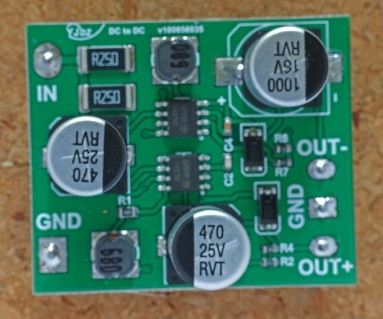
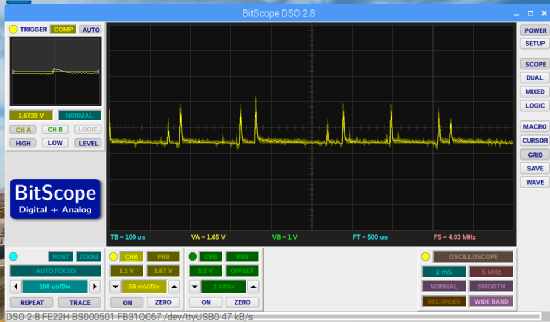

As a matter of interest, above is the module which generates + and -
The bottom trace shows the noise from a 5 volt power supply. It looks a lot less.
Spinoff